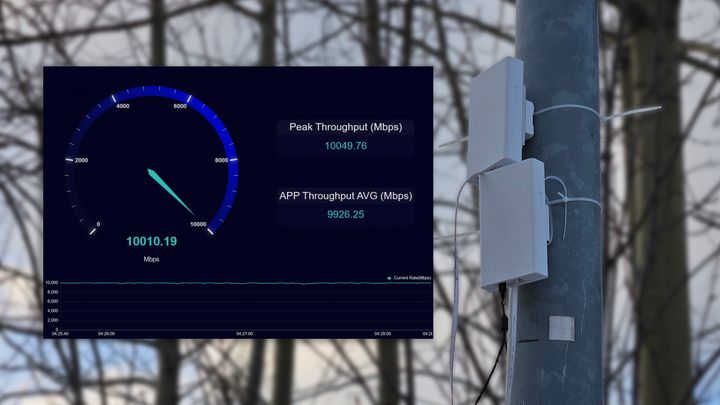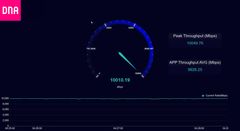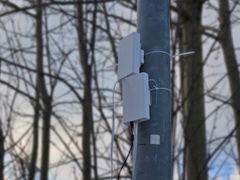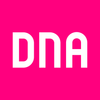5.5G technology is coming: DNA reached a speed of more than 10 gigabits per second in its mobile network
The new 5.5G standard will be released for commercial use in early 2024. The upgrade, dubbed 5.5G or 5G Advanced, is the next stage in 5G technology on the way to the 6G era. It takes mobile network technology one step further in terms of capability, offering several new features that will benefit consumer and corporate users. DNA has already used the technology to test speeds of more than 10 gigabits per second in its commercial mobile network.

5.5G is the next major milestone in the 5G era. 5.5G or 5G Advanced, as the standardisation phase is also known, is the next step on the way to the 6G era. It covers the next three standard versions of the 3GPP, known as releases 18, 19 and 20. Release 18 will be completed in early 2024, and commercial network and terminal device solutions based on it are expected to hit the market later in the year. The 3GPP, or the 3rd Generation Partnership Project, is a collaboration between several standardisation organisations that develops global standards for mobile communications. It was established back in 1998.
“Whatever name you want to call the standard, it is an important bridge on the way from 5G to 6G. Finland has always been one of the pioneers in the world in mobile technology. Even now, even though 5G networks are still being built at a rapid pace around the country, we are also attending to future prospects together with our partners. The first phase of the 5.5G standard, i.e. release 18, will be completed in early 2024, and solutions based on it are expected to hit the market later next year”, says Jarkko Laari, VP, Radio Networks at DNA.
5.5G is expected to bring significant benefits to both service providers and users. It enables up to ten times the data speed and number of devices connected to the network compared to the original 5G standard. In the future, the role of artificial intelligence in the network will increase as it becomes an integral part of the network solution through standardisation. This, in turn, will enable even better optimisation of functions such as energy consumption and performance. In addition to download speeds of more than 10 gigabits per second, the standard will also enable gigabit-class upload speeds over the mobile network in the future. The predictability of network latency will also be further improved.
“Gigabit-class upload speeds will certainly be of particular interest to our corporate customers. 5.5G technology will make it possible to utilise AR and VR applications in larger environments than at present, such as in various industrial production facilities. Our goal is to be able to pilot the possibilities of the new technology with our customers in real usage situations, such as the fixed broadband connections of businesses and homes, in the near future”, Laari says.
DNA also introduced Passive IoT technology at its head office
On Wednesday 13 December, DNA organised an open event for the media at its head office in Käpylä, Helsinki, where the new technical capabilities of 5.5G and the opportunities for consumer and corporate customers were presented. Two separate demo events were held at the same time, one of which showcased the data speed of 5.5G technology in DNA’s commercial network, and the other the so-called Passive IoT technology, which is believed to have a significant impact on the spread of the Internet of Things in various logistics processes. However, Passive IoT technology is not part of the standard version to be released in early 2024, but is only one of the functionality candidates for the next version.
In the speed demo, a speed of more than 9,5 gigabits per second was achieved in the mobile network in the immediate vicinity of DNA’s head office. The measurement was carried out in the morning hours, when there is also other traffic in the network. During the quiet early hours of the morning, speeds of more than 10 gigabits per second have been reached for one user. In the test phase, two receiving 5G terminal devices combined have been used in the speed measurements, as commercial terminal devices supporting this 5.5G technology will not be available until later in 2024. Both 26 GHz and 3.5 GHz time-division bands and 2600 MHz, 2100 MHz and 1800 MHz frequency-division bands were used in the speed measurement.
The topic of the second demo was Passive IoT technology, which in the future will enable, for example, tracking the number and temperature of products equipped with RF tags in the desired area over the mobile network. Tracking can be carried out from a distance of up to 200 meters, which is believed to offer significant application opportunities in, for example, the logistics sector. The tags are only the size of the tip of one’s thumb and very inexpensive, so they are easy to use extensively, for example, to track stock levels. They get their power directly from their environment, such as from the radio network. DNA demonstrated Passive IoT technology in a separate test environment built at its head office.
Media enquiries:
Jarkko Laari, VP, Radio Networks, DNA Plc, tel. +358 44 044 4949, jarkko.laari@dna.fi
DNA Corporate Communications, tel. +358 44 044 8000, communications@dna.fi
Images



DNA is one of the leading telecommunications companies in Finland. Our purpose is to connect you to what matters most. We offer connections, services and devices for homes and workplaces, contributing to the digitalisation of society. Already for years, DNA customers have been among the world leaders in mobile data usage. DNA has about 3.6 million subscriptions in its fixed and mobile communications networks. The company has been awarded numerous times as an excellent employer and family-friendly workplace. In 2022, our total revenue was EUR 997 million and we employ about 1,700 people around Finland. DNA is a part of Telenor Group, a leading telecommunications company across the Nordics. More information: www.dna.fi, X @DNA_fi, Facebook @DNA.fi and LinkedIn @DNA-Oyj.
Alternative languages
Subscribe to releases from DNA Oyj
Subscribe to all the latest releases from DNA Oyj by registering your e-mail address below. You can unsubscribe at any time.
Latest releases from DNA Oyj
DNA:n lokakuun 2025 myydyimmät puhelimet ja älykellot3.11.2025 08:00:00 EET | Tiedote
DNA:n lokakuun myydyimmäksi puhelimeksi nousi Applen edullisin iPhone 16e 5G. Myös Applen uutuudet säilyivät listalla, mutta tippuivat sijoituksissa jo alemmaksi. Yritysasiakkaiden puolella Samsung nousi pitkästä aikaa listan kärkeen, kun ykkössijan otti Samsung Galaxy A26 5G. Älykelloissa myydyimmät jakautuivat laajasti eri valmistajien välillä ja ensimmäisen sijan vei tällä kertaa Honor Watch 2i.
Uudet turvallisen nettiselauksen liittymät estäneet jo yli 7 miljoonaa huijausyritystä31.10.2025 10:00:00 EET | Tiedote
Uuden ajan DNA Huoleton puhelin- ja laajakaistaliittymät sekä Varma -yritysliittymät ovat herättäneet paljon mielenkiintoa. Ne sisältävät turvallisen nettiselauksen, joka estää asiakkaita joutumasta haitallisille verkkosivuille. Turvallinen nettiselaus on tehokas suoja verkossa tapahtuvia huijauksia vastaan, ja ominaisuuden avulla onkin saatu estettyä edeltävän puolivuotisen eli touko-lokakuun aikana liittymien käyttäjiltä jo 7,6 miljoonaa huijausyritystä.
New subscriptions with secure internet browsing have already blocked over 7 million scam attempts31.10.2025 10:00:00 EET | Press release
The new DNA Huoleton mobile and broadband subscriptions, as well as Varma business subscriptions, have attracted significant interest. They include secure internet browsing, a feature that prevents customers from accessing harmful websites. Secure internet browsing is an effective safeguard against online scams, and during the past six months from May to October it has already blocked 7,6 million scam attempts for subscription users.
Uusi digitaalisen turvallisuuden raportti peräänkuuluttaa pohjoismaista yhteistyötä kriittisen infrastruktuurin turvaamiseksi30.10.2025 12:30:00 EET | Tiedote
Pohjoismaiden digitaalinen turvallisuus on uudenlaisten uhkien edessä. DNA:n omistajayhtiön, norjalaisen tietoliikenneyhtiö Telenorin tänään julkaisema Nordic Digital Security 2025 -raportti korostaa, että alueen kriittisen infrastruktuurin suojaaminen vaatii entistä tiiviimpää yhteistyötä valtioiden ja yritysten välillä.
DNA Oyj:n heinä–syyskuun 2025 liiketoimintakatsaus: Liikevaihto ja kannattavuus jatkoivat kasvua29.10.2025 08:30:00 EET | Tiedote
Kuluvan vuoden kolmas neljännes oli DNA:lle taloudellisesti menestyksekäs. Heinä–syyskuussa niin liikevaihto, palveluliikevaihto, liikevoitto kuin käyttökatekin kasvoivat, kuten myös matkaviestinverkon sekä kiinteän laajakaistan liittymämäärät.
In our pressroom you can read all our latest releases, find our press contacts, images, documents and other relevant information about us.
Visit our pressroom